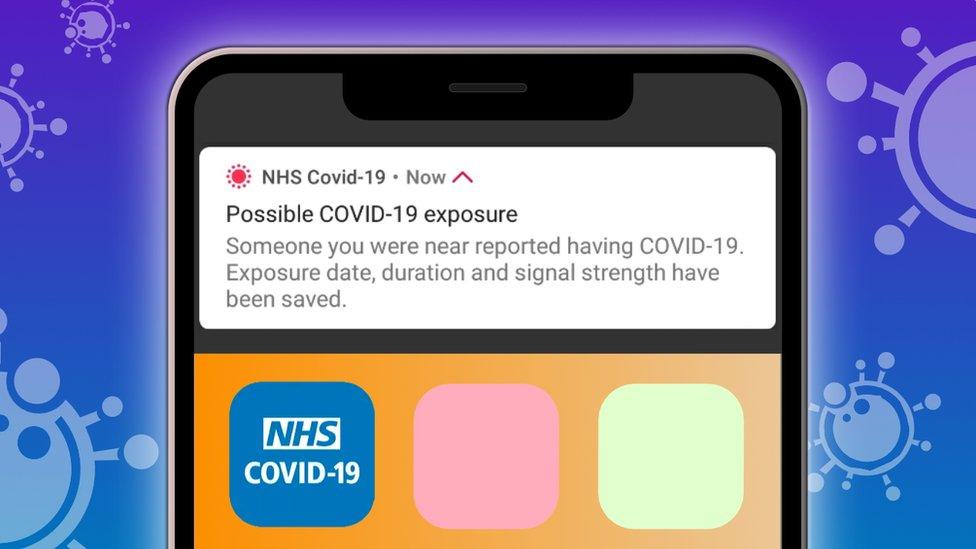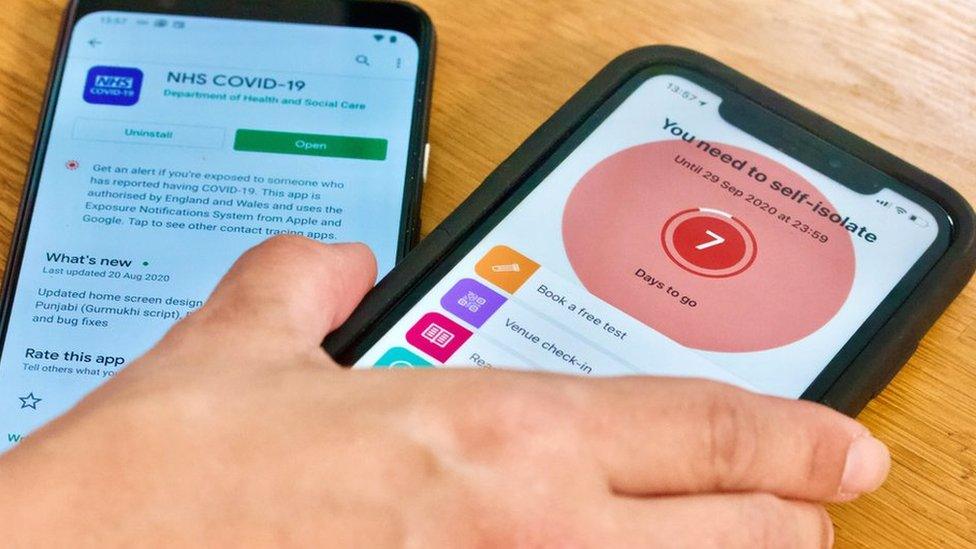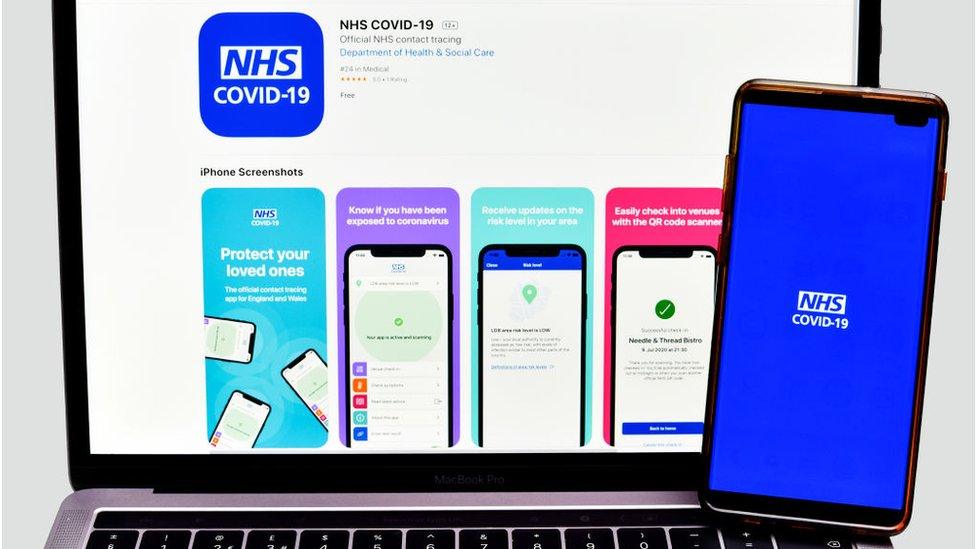Disappearing Covid-19 app alerts cause alarm
- Published
- comments

All week there has been concern from users of the NHS Covid-19 app about disturbing alerts that quickly vanish.
Now the Department of Health says it is working on a fix - but warned it could take some time.
The issue affects the England and Wales app, but not Scotland's or Northern Ireland's.
The alerts are generated by the underlying Apple and Google framework rather than the app itself, but they are causing alarm and confusion.
Lee Stanley, who says he installed the app last Thursday as soon as it was available, saw this message flash up: "Possible Covid-19 exposure. Someone you were near reported having Covid-19. Exposure date, duration and signal strength have been saved."
He said: "When I clicked on that to open up the notification to see what happened, it didn't do anything."
As he was in Birmingham, which the app was telling him was at a high-risk level, he was naturally concerned.
He delved into the app's website for further advice: "In the FAQs, there is a 'what to do if the app tells you that you've been near somebody who has Covid-19'. And that tells you to self-isolate for 14 days."
But when he took to Twitter, many people told him this might be a false alarm.
"I don't know whether that is the case or not. That's the confusing thing."
In fact, the Department of Health has been stressing all week that people should not be concerned by these alerts, which originate from the underlying Apple Google Exposure Notifications system.
The only notifications that matter appear in the app itself, telling you to go into isolation and starting a countdown clock, or warning that a location where you have checked in has been designated a virus hotspot.
That message received by Lee - and many others - merely signals that the Bluetooth contact tracing is working and has made contact with someone infected with Covid-19. But that contact does not meet the threshold set by the scientists advising the NHS, as significant enough to force someone into isolation.
Why has it not been fixed?
But there are questions as to why the app team has not moved to deal with an issue which continues to cause concern.
After all, I have had it confirmed that users of the apps in Scotland and Northern Ireland, which also use the Apple Google system, are not receiving the same alerts.
It appears that may be due to the fact that they are using a more recent version of the software than the one with which the NHS app launched last week.
Apple has indicated that this should not be too tricky to fix. "It's not a heavy lift" is how one source put it.
We have struggled this week to get answers from the app team and the Department of Health about how they intend to deal with the problem.
Early on Friday, we were told that an update to address the issue was being worked on, but that it might take weeks.
It was also suggested that a quick fix might lead to the flow of data to the app being interrupted, making it less accurate in judging what was a close contact.
'Badly designed'
Luke Redpath, a developer who is familiar with the Apple Google API (Application Programming Interface), has some sympathy with the NHS team, feeling the tech giants need to shoulder some of the blame: "This is as much down to a badly designed API in the first place."
The API is, in a nutshell, a framework which enables different apps to talk to each other.
Luke also said that upgrading the app to use the newest version of the API could prove challenging, because it could end up excluding even more phones.
But he thinks there is still a way to give people reassurance in the short term.
"They could improve the situation greatly by improving the user experience in the app. You could display something that makes it clear that, yes, we received the potential exposure, but we've verified it and it's nothing to worry about."
Having received one of the alerts himself, Luke understands how troubling they can be: "It even made me feel anxious - and I'm a developer."
Overall, the NHS Covid-19 app has had a successful launch, with more than 14 million downloads in its first week. But if one of its aims is to alert people to the risks they face and change their behaviour, then surely ending alerts which confuse and worry them must be a priority.
- Published24 September 2020

- Published28 September 2020
